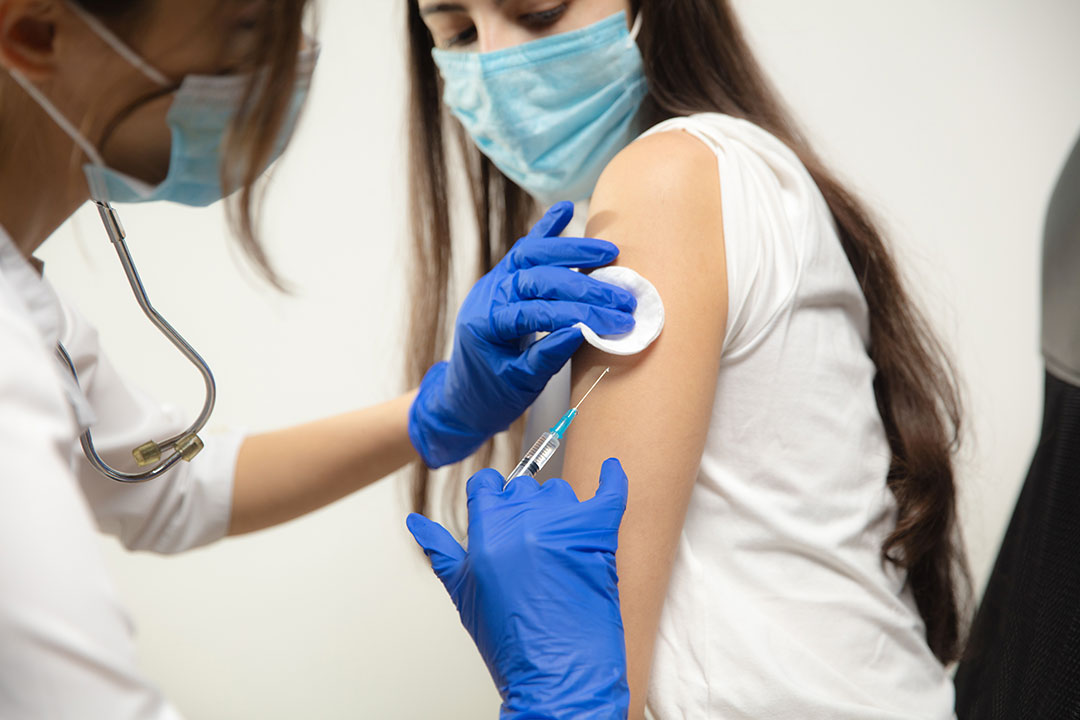
Medicine Cabinet
By Teodoro B. Padilla

Cervical cancer is the second most common cancer among women in the Philippines, including those between the ages of 15 and 44, according to the Department of Health (DoH). Annually, nearly 8,000 women in the country are diagnosed with cervical cancer, 50% of whom die from the disease.
Women should see a doctor if they notice unusual bleeding between periods, after menopause, or after sexual intercourse; increased or foul-smelling vaginal discharge; persistent pain in the back, legs, or pelvis; weight loss, fatigue and loss of appetite; vaginal discomfort; and swelling in the legs.
The main cause of cervical cancer is persistent infection with high-risk types of human papillomavirus (HPV). If left untreated, persistent HPV infection causes 95% of cervical cancers.
To promote prevention and early detection, the World Health Organization (WHO) recommends HPV vaccination. It also recommends regular cervical cancer screening for women from the age of 30. HPV vaccination, cervical cancer screening, and cervical cancer treatment are the three “elimination pillars” of the WHO “Global strategy to accelerate the elimination of cervical cancer as a public health problem.” If the three pillars of elimination are established, the Philippines could avert nearly a million deaths due to cervical cancer over the next century.
The HPV vaccine has been proven to be safe and effective at protecting against HPV and reducing HPV infections, which reduces the risk of cervical cancer and other cancers (vaginal, vulval, and penile cancer, among others) caused by HPV, according to the US Centers for Disease Control and Prevention (CDC).
The Pediatric Infectious Disease Society of the Philippines (PIDSP) and Philippine Foundation for Vaccination (PFV) recommend a two-dose HPV vaccine series for females ages nine to 14 years, and a three-dose series for females ages 15 years and older. The Philippine Society for Microbiology and Infectious Diseases (PSMID) recommends HPV vaccination for females until the age of 26 years for the prevention of cervical cancer and anogenital warts.
Some countries have also chosen to vaccinate boys to further reduce the prevalence of HPV in the community and to prevent cancers in men caused by HPV, the WHO said. PIDSP and PFV recommend HPV vaccine for males nine to 18 years of age for the prevention of anal and genital warts and anal cancer. PSMID recommends HPV vaccine for males 16-26 years of age for the prevention of genital warts and anal cancer.
Substantial declines in high-grade cervical disease and genital warts among vaccine-eligible women have been observed in Australia, one of the first countries to fund and implement a National HPV Vaccination Program. In 2007, Australia launched a nationwide HPV vaccination drive for the prevention of HPV infection and associated disease using the quadrivalent HPV vaccine, initially for girls only and extended to boys in 2013, with uptake rates among the highest observed worldwide.
A paper published in the October 2018 issue of the open-access medical journal Eurosurveillance reported the impact of this national program on HPV prevalence and associated disease burden and estimated the potential impact of adopting a nonavalent HPV vaccine.
The paper reported substantial declines in high-grade cervical disease and genital warts among vaccine-eligible women in Australia.
A nonavalent HPV vaccine is expected to prevent up to 90% of cervical and 96% of anal cancers. Of an estimated 1,544 HPV-associated cancers in 2012, 1,242 would have been preventable by the nonavalent HPV vaccine and an additional 187 anogenital cancers by the 9vHPV vaccine.
Vaccination using quadrivalent HPV vaccine has had a large demonstrable impact on HPV-related disease in Australia. A switch to a nonavalent HPV vaccine could further reduce the HPV-associated cancer burden. With continued high coverage among both males and females, elimination of vaccine-type HPV disease seems achievable in Australia, the paper concluded.
Vaccines help save millions of lives every year around the world. They are one of the best tools in the fight against infectious diseases, including persistent HPV infection, the main cause of cervical cancer. Vaccines can lower the burden of care on families and healthcare systems, reduce disruption to our lives and livelihoods, lower health inequities and contribute to broader wellbeing and prosperity. The HPV vaccine gives us hope that cervical cancer could be eliminated within our lifetimes.
Teodoro B. Padilla is the executive director of Pharmaceutical and Healthcare Association of the Philippines which represents the biopharmaceutical medicines and vaccines industry in the country. Its members are in the forefront of research and development efforts for COVID-19 and other diseases that affect Filipinos.